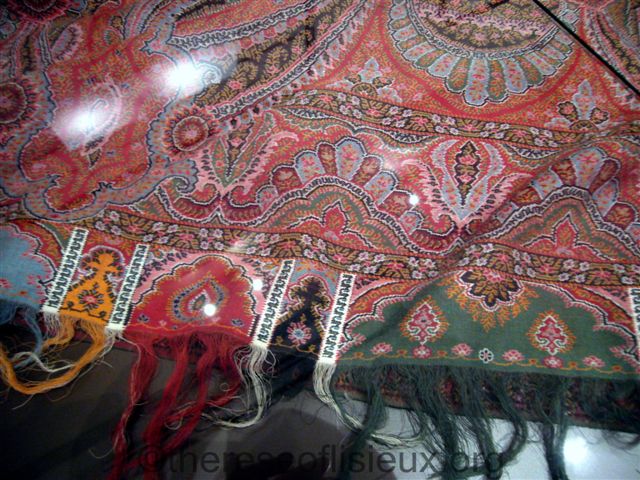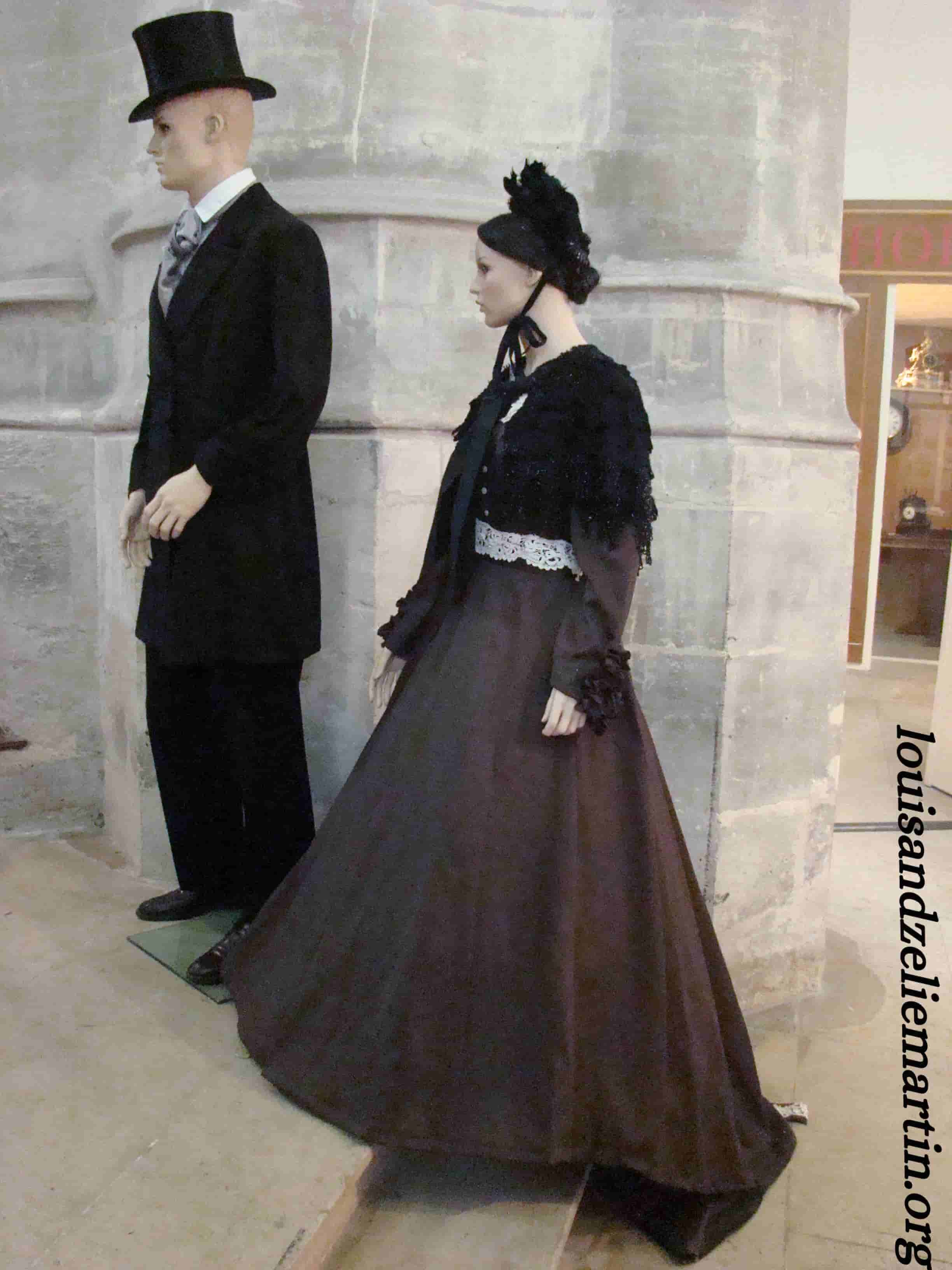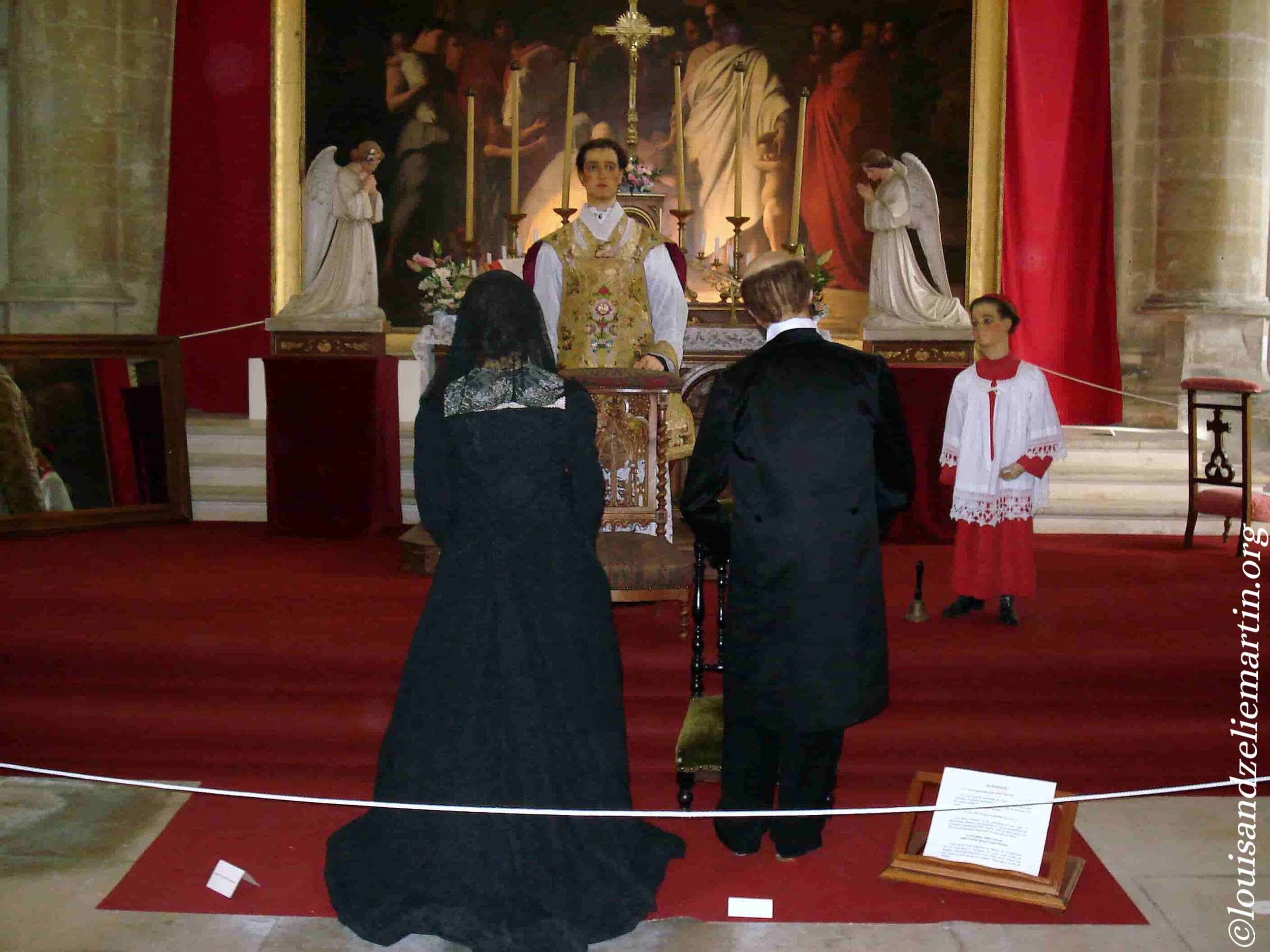The wedding of Zelie Guerin and Louis Martin, July 13, 1858: "Frequently Asked Questions," a story with 21 photos to celebrate their feast on July 12
/A cOMPOSITE PHOTO OF ZELIE GUERIN AND LOUIS MARTIN NEAR THE TIME OF THEIR MARRIAGE, COURTESY OF FR. ANTONIO SANGALLI, O.C.D.
Louis and Zelie's encounter in April 1858; their engagement
st. leonard's bridge over the sarthe river, alencon. photo courtesy of the shrine at alencon.
The lacemaker, Zelie Guerin, and the watchmaker, Louis Martin, first saw each other while crossing the St. Leonard Bridge over the Sarthe River in Alencon. Zelie heard an interior voice, which she understood to be that of the Blessed Virgin, saying "This is the one I have prepared for you." The two young artisans were introduced, probably by Louis's mother, who attended a lacemaking class with Zelie.
Zelie martin’s wedding ring. the two rings rested on top of each other on her finger, after the custom of the time. PHOTO CREDIT: YVES AND LAI PING COGOLUEGNES KONG, WITH THANKS TO THE SHRINE AT ALENCON.
Although they married three months after they met, it is known that their engagement was sealed by the Church in a religious betrothal ceremony.
A two-step wedding: civil and religious ceremonies
Like all couples who chose to be married in the Catholic Church in France at that time, Louis and Zelie were obliged first to undergo a civil marriage ceremony in the town hall; the Republic did not recognize church marriages.
a later copy of the contract of marriage between zelie guerin and louis martin, signed june 24, 1858
The civil proceedings began on June 24, when Louis and Zelie appeared before Maitre Felix Homney, a notary, and declared their intention to marry.
zelie's Wedding preparations
Zelie was living with her parents at rue Saint-Blaise, which had been her girlhood home since her parents moved to Alencon when she was about twelve.
At right, the house on rue saint blaise in alencon where zelie lived as a girl and from which she was married. In 1871, she and louis and their four daughters returned to this house, where therese was born in 1873. at left, the chapel constructed adjoining the house in 1925, the year therese was canonized. photo credit: fr. pierre-yves emile, wikipedia. https://creativecommons.org/licenses/by-sa/3.0/deed.en
We can imagine her preparing for the ceremonies and getting dressed here.
THEIR CIVIL MARRIAGE
Then, at 10:00 p.m. on Monday, July 12, Louis and Zelie appeared at the town hall in Alencon before M. Hippolyte Verrier, deputy mayor, and accomplished the civil ceremony.*
RECORD OF THE CIVIL MARRIAGE OF ZELIE GUERIN AND LOUIS MARTIN, JULY 12, 1858
THEIR RELIGIOUS CEREMONY
the church of notre dame of the assumption in alencon. in 2009, after the beatification of louis and zelie, it was named a basilica.
At midnight, with the beginning of Tuesday, July 13, they went to Zelie's parish church, Notre Dame, for their religious ceremony. They had a quiet, reverent wedding by candlelight, surrounded by their closest relatives and a few friends.
WHY DID LOUIS AND ZELIE MARTIN GET MARRIED AT MIDNIGHT?
Couples who preferred a quiet, prayerful ceremony in the intimacy of the Church, without a lot of show, often scheduled their weddings for midnight, especially on a weekday. Since the Eucharistic fast then began at midnight, a midnight wedding allowed those who wished to receive Communion to do so. Louis and Zelie also wanted to have time, later on their wedding day, to take the train to Le Mans to visit Zelie's sister, Marie-Louise, who had entered the monastery of the Visitation there three months before.
The main altar of the church of our lady of the assumption in alencon. note the small chapel behind the main altar, separated from the rest of the church by a curtain. an oral tradition suggests that the marriage of louis and zelie martin took place in that chapel.
EXACTLY WHERE DID THE CHURCH CEREMONY TAKE PLACE?
We can no longer be certain exactly where, within the church, the ceremony took place. An oral tradition suggests that it was the choir behind the main altar.*
Who was the presiding priest?
m. frederic hurel,the priest who presided at the marriage of louis and zelie martin. photo courtesy of peter and liane klostermann, with thanks to the shrine at lisieux.
M. Frederic Hurel, who, in Louis's boyhood, had been a cure at St. Pierre de Monsort (Louis's parish church, and the church where he and Zelie worshipped until they moved to rue Saint-Blaise in 1871) witnessed the marriage. In 1858 he was dean (senior priest) of St. Leonard's Church. He was a leading figure in the Catholic Circle at Alencon, a group of energetic young Catholics who supported each other in the faith and in social action. Louis Martin was an active member of this circle, which was named for his close friend, Vital Romet.
How was Zelie dressed for her marriage?
Zelie did not wear a white wedding gown. As far as we know, her wedding dress was not preserved.
a tableau representing saints louis and zelie martin entering the church in alencon, mounted as part of the exposition "Histore d'une Famille: Louis et Zelie Martin" at St. Jacques Church in Lisieux in 2007. PHOTO CREDIT: PETER AND LIANE KLOSTERMANN. THANKS TO THEM AND TO THE SHRINE AT LISIEUX.
The tableau above shows how Louis and Zelie might have been dressed.
A later bride in the family, who did wear white, contributed her dress for a liturgical use. The wedding dress of Therese’s cousin, Jeanne Guerin, was given to the Carmel to make curtains for the little communion grille. Later the bridal dress Therese had worn for her Clothing was sacrificed to decorate priestly vestments for her canonization Mass.
WHAT DID THE CEREMONY LOOK LIKE?
tableau of the wedding ceremony of sts. louis and zelie martin, mounted as part of the exposition at st. jacques church in lisieux by the shrine at lisieux in 2008. photo credit: ann hess, with thanks to the shrine at lisieux.
The above tableau suggests how the wedding ceremony could have appeared. It was a midnight ceremony; the space was lit with torches, and each guest held a lighted candle.
WHAT WAS THE "MARRIAGE MEDALLION?"
At some weddings in France then, it was customary to use a "marriage medallion" which the priest blessed. Louis, the jeweler, designed the marriage medallion himself as a gift to Zelie, using the Biblical story of Sarah and Tobias as his theme.
LOUIS AND ZELIE'S ORIGINAL MARRIAGE MEDALLION, NOW IN THE CUSTODY OF THE DIOCESE OF SEES. PHOTO COURTESY OF SUSAN EHLERT.
At the moment they exchanged their vows, the priest blessed the medallion. Louis slipped the wedding ring on the finger of Zelie's right hand, and then placed the medallion in her left hand, saying "Receive the symbol of our wedding promises."
What was the date of Louis and Zelie Martin's wedding?
The date is sometimes given as July 12 (their feast day), sometimes as July 13. In fact, since the religious ceremony did not begin until midnight, they were married on July 13, 1858. The date of their civil marriage, which took place at 10 p.m., was July 12.
What was Zelie's baptismal name?
Zelie was baptized "Azelie-Marie," and her baptismal certificate gives these names. She was always called "Zelie" and signed her letters "Z. Martin." Both the civil and the religious certificates of her marriage give the names “Azelie-Marie.” Unfortunately, especially since the canonization, her name is often listed as "Marie Zelie" or "Marie-Azelie." Both the contemporaneous documents and the vice-postulator, Father Antonio Sangalli, confirm that this is an error.
EXTRACT FROM THE MARRIAGE REGISTRY OF NOTRE dAME CHURCH IN ALENCON ATTESTING TO THE RELIGIOUS MARRIAGE OF AZELIE-MARIE GUERIN AND LOUIS MARTIN, ISSUED BY FR. HUREL AND SIGNED BY THE BRIDE AND GROOM AND THE HANDFUL OF FAMILY AND FRIENDS WHO WITNESSED THE MARRIAGE CEREMONY.
After the marriage ceremony Fr. Hurel completed the marriage certificate. He notes that the pastor had given him permission to preside at the marriage; that the banns had been read; and that Louis and Zelie had celebrated a religious engagement ceremony. Louis and Zelie were, of course, the first to sign the certificate. Note that Zelie omitted her second name; she signed only “Azelie Guerin" (see the lower right). Then their relatives and friends signed as witnesses.
WHERE DID LOUIS AND ZELIE BEGIN THEIR MARRIED LIFE?
THE ORIGINAL BUILDING ON RUE PONT-NEUF WHERE LOUIS MARTIN MAINTAINED HIS WATCH SHOP. HE LIVED OVER THE SHOP WITH HIS PARENTS AND HIS YOUNG NEPHEW, ADOLPHE LERICHE. ZELIE JOINED THE HOUSEHOLD HERE WHEN THEY MARRIED.
This building on rue Pont-Neuf, where Louis had lived with his parents and his nephew since 1850, saw the beginning of their marriage. Zelie moved into the household, and Louis and Zelie lived here from 1858 until 1871: for 13 years of their 19-year marriage. All their children were born here except Therese. The original building still stands. I hope that the Church will acquire and preserve this property. Although it's less well known than the house on rue Saint-Blaise, it is of vital significance in the story of this family's holiness.
These upper rooms, the Martin family's home, were the scene of Louis and Zelie's wedding night, which was both eventful and uneventful. But that is another story.
*Louis et Zelie Martin, by Thierry Henault-Morel. Paris: Editions du Cerf, p. 78. I am indebted to this superb book for several details.
See a comprehensive slide show of the story of Saints Louis and Zelie Martin and their family.






















